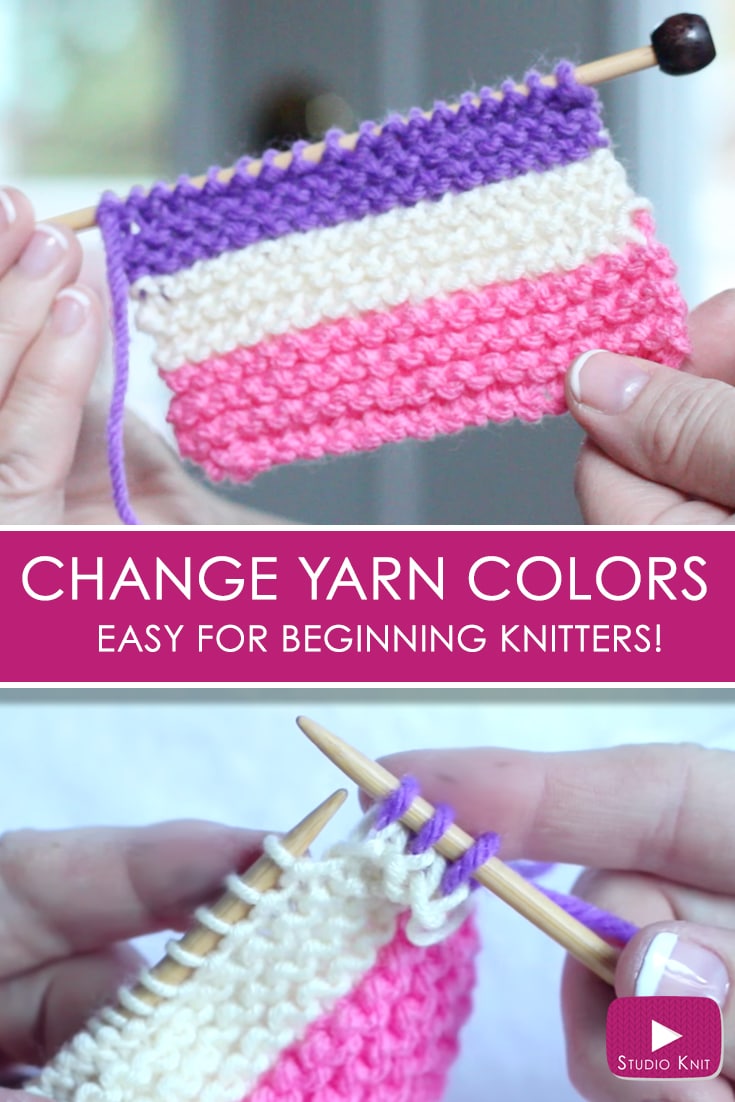Changing Colors When Knitting - Change the color as normal and knit one round. Web by jodie morgan. 454k views 12 years ago cable knitting stitches {knitting stitchionary} written instructions: This video will help you learn how to add. I know you are probably expecting some magic, but for the first round in the new color, you can keep everything the way you always did. Insert the needle into the first stitch, loop the new colour over the tip of the right hand needle and knit the first stitch. 638k views 9 years ago. Web 149k views 2 years ago ways to join yarn in knitting. Web how to join in a new color with twist and weave. Insert the needle into the first stitch, loop the new color over the tip of the right hand needle and knit the first stitch.
How to Change Colors in Knitting 9 Easy Steps wikiHow
Web there are several methods for changing colors in knitting, each suited to different types of projects and patterns. Here's how to do that: In.
How to Change Yarn in Knitting YouTube
Insert the needle into the first stitch, loop the new color over the tip of the right hand needle and knit the first stitch. Holding.
How to change color knitting YouTube
Insert the needle into the first stitch, loop the new colour over the tip of the right hand needle and knit the first stitch. I’ve.
Twist and weave a super neat way to join a new color in knitting
This method is fast and works very well for knitting stripes. Don't know what to knit next? Drop the first color and start the second..
Changing Colors When Knitting Stripes
726k views 15 years ago. Web here is a new knitting technique tutorial for how to add a new color yarn to your project! Web.
How to change colors in knitting 6 easy methods you need to know
Pick up the short length, taking it under the long length and place it on needle. Changing colors while knitting vertical stripes requires even tension,.
How to change colors in knitting using the twist and weave method YouTube
Adding more colors to your knitted goods is a great way to add contrast, complements, interest, and personality to your work. 454k views 12 years.
How to Change Colors in Knitting 13 Steps (with Pictures)
Web by jodie morgan. Change the color as normal and knit one round. This joining method basically boils down to twisting the yarns around with.
How to Change Yarn Colors While Knitting with Video Tutorial Studio Knit
Here are some of the most common techniques: Lift the stitch one round below the first stitch of the second round. Insert the needle into.
I Am Using The Schachenmayr Catania Grande In This Tutorial.
Web by kristen mcdonnell january 4, 2018 last updated: Another method is the “stranded” or “fair isle” technique, where you carry two yarns along the back of the work and alternate between. I know you are probably expecting some magic, but for the first round in the new color, you can keep everything the way you always did. This joining method basically boils down to twisting the yarns around with your knitting needles at a specific spot.
Simply Drop The Old Color And Start Knitting With The New Color At The Beginning Of A Row Or Round.
Just change your colors the usual way and knit one full round. Pick up the short length, taking it under the long length and place it on needle. I show you how to add or. Mastering color changes is crucial in knitting, particularly for stripes and intricate designs.
Changing Yarn Color Or Adding A New Ball Of Yarn Is.
Web by jodie morgan. Changing colours in the round will now be almost invisible. Don't know what to knit next? Here are some of the most common techniques:
Web There Are Several Methods For Changing Colors In Knitting, Each Suited To Different Types Of Projects And Patterns.
Web here is a new knitting technique tutorial for how to add a new color yarn to your project! Drop the first color and start the second. Changing colors while knitting vertical stripes requires even tension, choosing the right colors of the same weight and texture, preparing the yarn by tying a slipknot and switching colors at the end of a row, weaving in the ends as you go to avoid tangles, and avoiding common mistakes like knotting the yarn or using different weig. This technique is best for larger, geometric patterns or when you want crisp color changes.




:max_bytes(150000):strip_icc()/ChangingColors7-5b1324b7ff1b780036267c2e.jpg)




